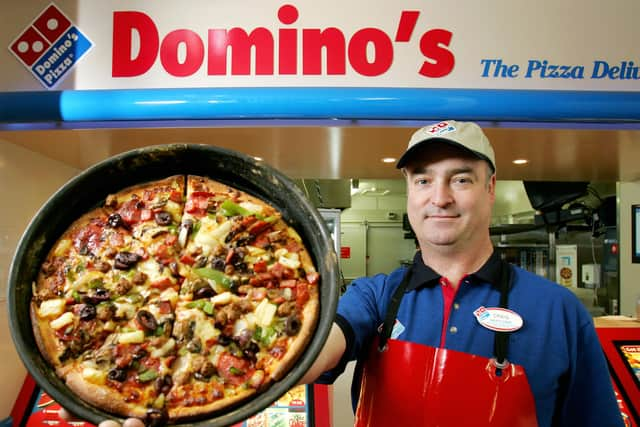Why has Domino’s Pizza pulled out of Italy? Reason fast food chain has closed its Italian stores explained
and live on Freeview channel 276
American fast food chain Domino’s Pizza has officially shut up shop in Italy.
The chain’s remaining 29 restaurants closed their doors, seven years after the franchise had opened them with the help of ePizza back in 2015.
Advertisement
Hide AdAdvertisement
Hide AdAt the time Domino’s had vowed to open 880 stores in the home of pizza.
Locals shunned the chain, with their use of American-style toppings not going down well, leading the Italian daily newspaper Il Messaggero declared “Italians don’t like pineapple pizza.”
Here’s everything you need to know about why Domino’s Pizza has closed in Italy.


When did Domino’s Pizza open in Italy?
The American fast food franchise opened its first Italian store in 2015, with an ambition to open 880 more.
Advertisement
Hide AdAdvertisement
Hide AdWhen it first launched, the chain vowed to use local produce and shy away from mass-produced ingredients.
Domino’s said to CNBC: “We are purchasing all of our products from Italian producers. We’ve created our own recipe, starting for the original pizza recipe, with Italian products, like 100 percent tomato sauce and mozzarella.”
Why has Domino’s Pizza pulled out of Italy?
The American fast food chain opened 33 restaurants in Italy in 2015.
However, by 2021, pizza sales were down nearly 38%.
A report on the sales findings stated: “We attribute the issue to i) the significantly increased level of competition in the food delivery market with both organised chains and ‘mom & pop’ restaurants delivering food to survive and ii) restaurants reopening post pandemics and consumers out and about with revenge spending,” the report stated.”
Advertisement
Hide AdAdvertisement
Hide AdThe franchise also struggled to get customers to download and order through its app, with more than half of its pizza orders made in person or over the phone.
Domino’s had already begun to scale back production, stopping online deliveries from its website from 29 July.
According to Bloomberg, the chain has gone bankrupt in Italy, with a tribunal in Milan granting ePizza protection from creditors until 1 July.
Auditing reports from the end of 2020 have revealed the chain was in €10.6 million worth of debt at the time.


What has the reaction been?
Advertisement
Hide AdAdvertisement
Hide AdThere has been a swift reaction to the news on social media, with people poking fun at the chain even trying to launch their product in Italy in the first place.
One Twitter user wrote: “If you ever feel you’re being outrageously over-confident about something, just remember that Domino’s thought they’d be able to justify opening 880 stores in Italy,”
Whilst another wrote: “Hilarious to think that Dominos thought they could conquer Italy. Did they actually compare their distinctly-average-but-extortionate pizzas to an authentic Napoletana? Madness”
Another Tweet declared “Trying to open Dominos Pizza in Italy is like trying to sell snow in the North Pole.”
Advertisement
Hide AdAdvertisement
Hide AdThe news was also reported in the Italian media, with a headline from the Italian daily newspaper Il Messaggero declaring “Italians don’t like pineapple pizza: Domino’s is shuttering all pizzerias in the country.”
The article poked fun at the American pizzas on offer such as “Pepperoni Passion” and the “Hawaiana,” stating that “These products would turn up the nose of traditional pizza lovers.”
Comment Guidelines
National World encourages reader discussion on our stories. User feedback, insights and back-and-forth exchanges add a rich layer of context to reporting. Please review our Community Guidelines before commenting.
